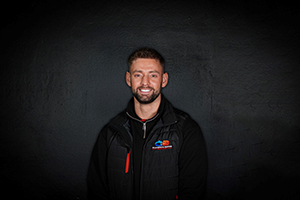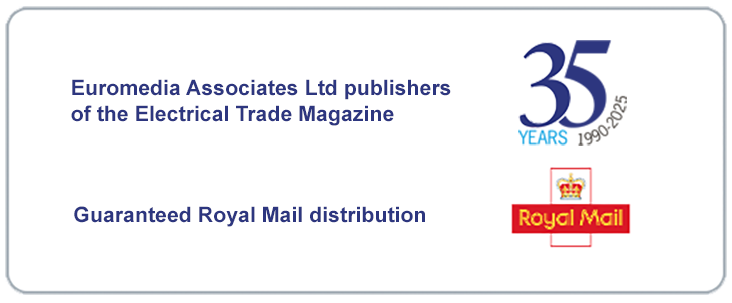As the UK moves toward net-zero, the heat pump is no longer a fringe technology, they’re becoming central to how we heat homes. With the government pushing for the phase-out of fossil fuel boilers and offering generous grants to support the transition, electricians and heating professionals are in a prime position to lead the way.
But selecting the right air source heat pump (ASHP) isn’t as simple as picking a model and matching it to square footage. It’s about understanding the building, the homeowner’s needs, and the unique requirements of UK housing stock.
Step 1: Start with a Heat Loss Calculation
In the UK, sizing a heat pump correctly starts with a whole-house heat loss calculation, factoring in wall types, insulation, window glazing, and air changes per hour. Tools like Heat Engineer or calculations aligned with SAP standards are your best bet.
Oversizing not only costs more but reduces system efficiency. Accurate calculations help ensure your client gets optimal performance, comfort, and running costs.
Step 2: Choose the Right Type of Air Source Heat Pump
UK installations typically fall into one of two camps:
Monobloc systems – Compact, outdoor-only units that simplify installation and avoid refrigerant handling regulations.
Split systems – Feature separate indoor and outdoor units, offering more control but requiring F-Gas certification to install.
Ducted systems are rare in the UK, so most installations will be radiator- or underfloor-heating based. For homes off the gas grid, particularly in rural areas, ASHPs offer a compelling alternative to oil or LPG boilers.
Step 3: Match the Heat Pump to the UK Climate
While the UK climate is mild, performance in cold weather still matters, especially in Scotland and Northern England. Look for units with strong SCOP ratings (Seasonal Coefficient of Performance), ideally above 3.5, meaning the system provides 3.5 units of heat for every 1 unit of electricity used over the heating season.
If your clients live in colder rural areas, ensure the unit is designed to maintain output at temperatures near or below freezing.
Step 4: Focus on Efficiency and Flow Temperatures
Unlike traditional boilers, heat pumps operate best at low flow temperatures, usually around 35–45°C. Ensure the radiators or underfloor heating systems are sized appropriately to deliver the needed heat at those lower temps.
Check the heat pump’s SCOP and ErP (Energy-related Products) label, both of which give a realistic picture of seasonal efficiency. An A++ or A+++ rating is a good benchmark to aim for.
Step 5: Consider Controls and Smart Features
Smart controls make a big difference, both in efficiency and user satisfaction. Many ASHPs now come with advanced controller apps, weather compensation, and the ability to schedule heating to match occupancy.
Look for models that are OpenTherm-compatible or that offer smart integration with solar PV systems or home energy management platforms. These features can futureproof the installation and support smarter grid usage as TOU (Time-of-Use) tariffs become more common.
Step 6: Leverage UK Grants and Incentives
Help your clients take advantage of generous government support. In England and Wales, the Boiler Upgrade Scheme (BUS) offers a £7,500 grant toward the cost of an ASHP, available until March 2028.
In Scotland, homeowners can access up to £7,500 in grants, plus an additional £7,500 interest-free loan through Home Energy Scotland, and up to £9,000 for rural properties.
These grants are a major driver in uptake and can drastically reduce the client’s up-front investment. You’ll need to be MCS-certified to install eligible systems, so it’s worth investing in that accreditation.
Step 7: Think About Aesthetics and Noise
Many UK homes are in tight terraced rows or have limited garden space, so where you place the outdoor unit matters. Choose units with low noise levels (look for sub-50dB models) and always check planning regulations, especially for flats or listed buildings.
A discreet installation that blends with the property adds value and avoids neighbour complaints.
Step 8: Prioritise Quality and Aftercare
Stick with trusted manufacturers like Viessmann, Riello and Vaillant. Make sure you have access to spare parts and local technical support.
Just as importantly, educate your clients about maintenance: filter cleaning, annual servicing, and keeping the outdoor unit clear of debris. A well-maintained system runs more efficiently and lasts longer.
Remember, choosing the right air source heat pump for a UK home isn’t just about kilowatts, it’s about designing a system that works harmoniously with the property, the lifestyle, and our changing energy landscape.
By guiding your clients through the process, from accurate sizing to grant applications, you’re not just installing a heating system. You’re helping future-proof their home and your business.

By Calvin Bannan, Founder & Director, CB Services Group
Calvin Bannan is the founder and Director of CB Services Group, a fast-growing Glasgow-based company specialising in radiators, heating, plumbing, and drainage for both residential and commercial clients. Inspired by his stepfather, an engineer, Calvin pursued his own qualifications and built a career in the trade, starting as a call centre agent before stepping into the world of plumbing and heating at 17 years old.
Following years of hands-on experience as a fully qualified and gas safe heating and plumbing engineer, Calvin launched CB Plumbing & Heating Services in 2022 with a vision to deliver high-quality service and expertise. What began as a one-man operation quickly expanded to a team of 3 employed heating and plumbing engineers, reaching a first-year turnover of £135,359. By year two, revenue had more than doubled to £348,841, and today, with a team of seven, including his stepfather and stepbrother, Calvin is now leading the company into its next phase—scaling operations and moving into the commercial sector with the ambition of trebling turnover once again.
Beyond the business, Calvin brings the same drive and determination to his personal life. A passionate athlete, he travels worldwide to compete in Hyrox fitness events, constantly pushing his limits. His ability to combine strategic leadership with relentless ambition continues to shape CB Services Group into one of Scotland’s most dynamic emerging businesses.






